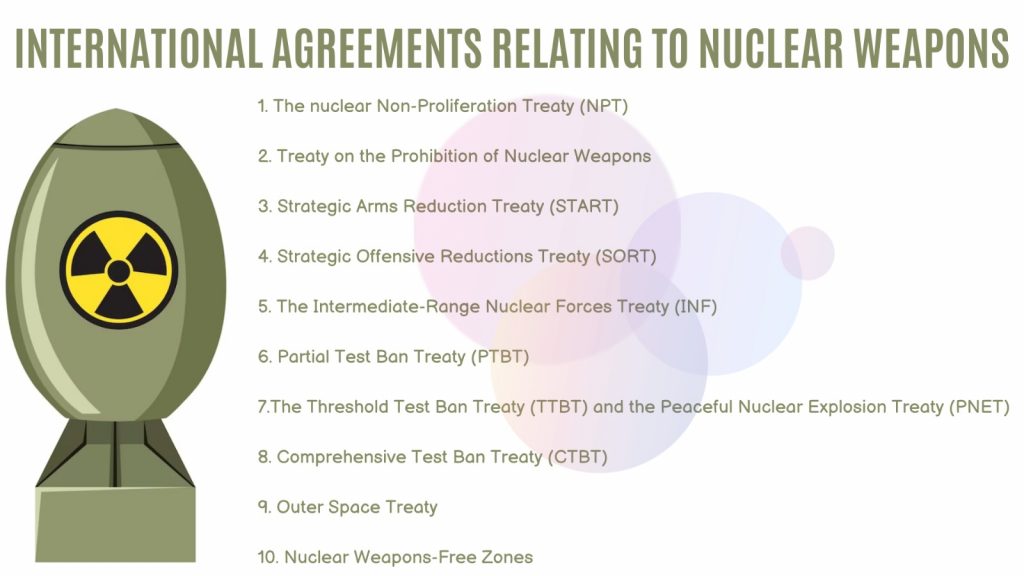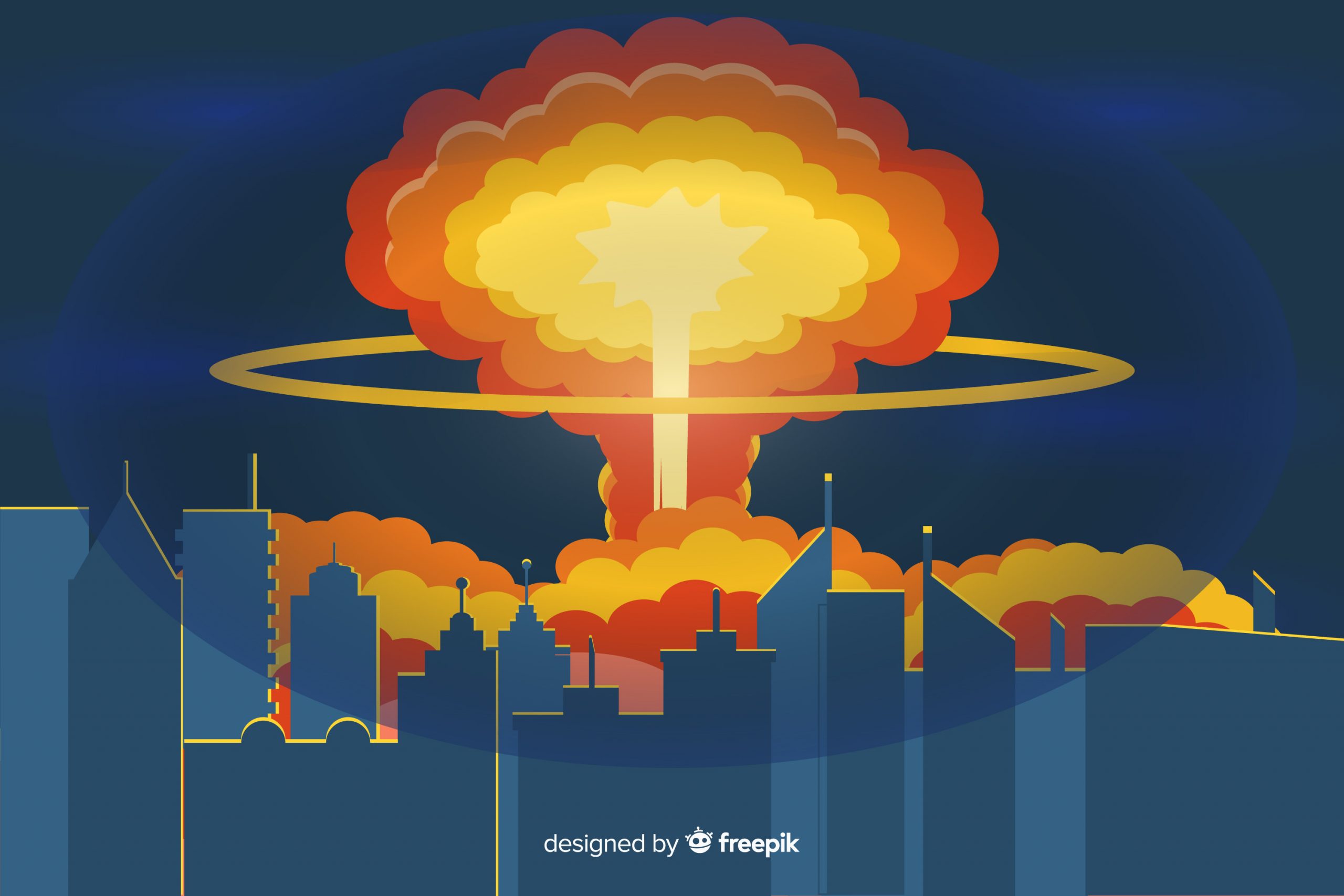News Highlights:
- Russian President Vladimir Putin’s announcement that he intends to deploy tactical nuclear weapons on the territory of Belarus.
- This move appears to be another attempt to raise the stakes in the conflict in Ukraine.
Key Takeaway:
- The deployment of tactical nuclear weapons to Belarus, which has a 1,084-kilometer border with Ukraine, would allow Russian aircraft and missiles to reach potential targets more easily and quickly if Moscow decides to use them.
- It would also extend Russia’s capability to target several NATO members in Eastern and Central Europe.
What are tactical nuclear weapons?
- About:
- Tactical nuclear weapons are intended to destroy enemy troops and weapons on the battlefield.
- They have a relatively short range and a much lower yield than nuclear warheads fitted to long-range strategic missiles capable of obliterating whole cities.
- Generally smaller in explosive power, they are defined in contrast to strategic nuclear weapons, which are designed mostly to be targeted at the enemy interior, far away from the war front against military bases, cities, towns, arms industries, and other hardened or larger-area targets to damage the enemy’s ability to wage war.
- As of 2023, no tactical nuclear weapon has ever been used in a combat situation.
- Category:
- Tactical nuclear weapons include gravity bombs, short-range missiles, artillery shells, land mines, depth charges, and torpedoes which are equipped with nuclear warheads.
- Also in this category are nuclear armed ground-based or shipborne surface-to-air missiles (SAMs) and air-to-air missiles.
- Dangers Associated with TNWs:
- Their small size and the absence of electronic locks or Permissive Action Links (PALs) on older versions contribute to their vulnerability to theft and unauthorised use.
- TNWs were intended for the battlefield and theatre-level operations in conjunction with conventional forces. These missions encourage their forward-basing and can make the decision to use TNWs psychologically and operationally easier.
- The very existence of TNWs in national arsenals increases the risk of proliferation and reduces the nuclear threshold, making the nuclear balance less stable.
- Treaty control:
- Ten NATO member countries have advanced a confidence-building plan for NATO and Russia that could lead to treaties to reduce the tactical nuclear weapons in Europe.
- As of 2012, NATO was moving forward with a plan to upgrade its tactical nuclear weapons with precision guidance that would make them equivalent to strategic weapons in effects against hardened targets and to carry them on stealth aircraft that are much more survivable against current air defences.

Usage of TNW Arsenals:
- Worldwide TNW Arsenals:
- TNWs constitute a large percentage of the arsenals of the nuclear weapon states.
- 30-40% of the American and Russian arsenals, nearly 100% of the Chinese and French arsenals, and all Israeli, Indian, and Pakistani arsenals are TWN.
- Great Britain no longer has short-range nuclear weapons.
- TNWs in Russia:
- Unlike strategic weapons, which have been subject to arms control agreements between Moscow and Washington, any such pacts have never limited tactical weapons. Russia hasn’t released their numbers or any other specifics related to them.
- While strategic nuclear weapons are fitted to land- or submarine-based intercontinental ballistic missiles constantly ready for launch, tactical nuclear weapons are stored at a few tightly guarded storage facilities in Russia. It takes time to deliver them to combat units.
- Some Russian hawks have long urged the Kremlin to warn the West by moving some tactical nuclear weapons closer to the aircraft and missiles intended to deliver them.
Conclusion:
- The new perception of the usability of nuclear weapons in Russia could create a dangerous precedent for other countries, leading them to believe that nuclear weapons could provide tangible political and military benefits and increase the propensity to acquire nuclear capability.
- Therefore, it seems highly desirable to strengthen the non-nuclear regime on TNWs.
Pic Courtesy: Freepik
Content Source: The Hindu



